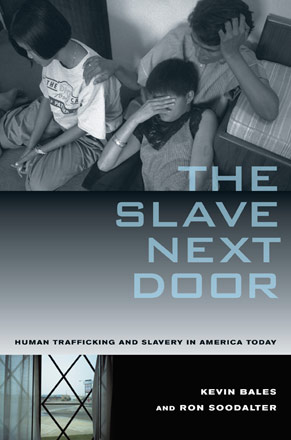 |
About The Slave Next Door
Tens of thousands of people from every part of the globe (including U.S. citizens) are living in
slavery today in America. They are controlled by violence, paid nothing, and forced to work
until they die, escape, or are rescued. Authors Ron Soodalter and Kevin Bales describe this
horrific condition in their definitive book, The Slave Next Door: Human Trafficking and
Slavery in America Today, which presents for the first time, a comprehensive and
compelling account of modern-day slavery in the Land of the Free.
Contrary to popular belief, slavery did not end with the Civil War; it is an invisible epidemic that
is ravaging America today. Slaves can be found – or more accurately, not found -
in all 50 states, working on construction crews, as fruit pickers and domestics, factory, restaurant,
and sweatshop laborers, and victims of sexual exploitation. They are hidden in plain sight, lured here
by traffickers, who have promised them opportunity – an education, a better job, a chance to
support or send for their families back home. Some are smuggled across the border by a single
“coyote,” while many more enter through our airports daily, with papers provided by crime
families or syndicates. Once inside the country, their dreams disappear, and a life of slavery
begins.
The Slave Next Door brings clarity and comprehension to a shocking but vital
issue, combined with moving accounts of victims who trusted their dreams to the wrong people. Through
gripping human stories, readers will see the many faces of slavery in the United States. The
authors’ extensive research and interviews conducted over the last several years examine the
different forms of bondage, addressing in detail the slaves, the traffickers, and the
“employers.” The book’s second half discusses what is – and is not
– being done on the federal, state, and local levels to free and support the victims, and to
apprehend the bad guys. The authors address tough questions, such as, why are less than 1% of the
traffickers and slaveholders ever arrested? Finally, they show the reader how to recognize
slavery in his or her own neighborhood or city, and they provide a blueprint for the ultimate
eradication of slavery in America.
|

|
 |




